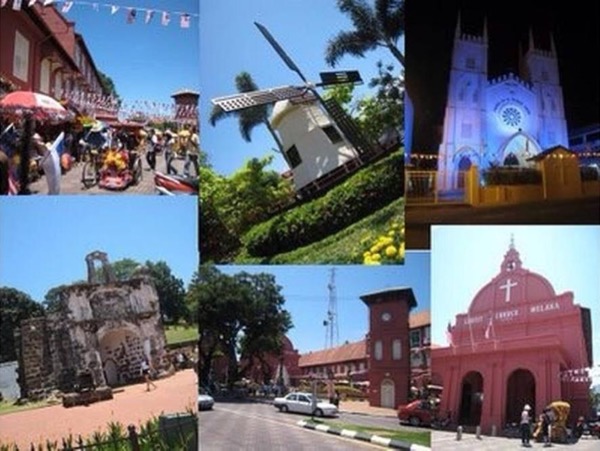A new premier outlet in Malacca to make its debut this year
An artist impression of Freeport A'Famosa Outlet Village, which would offer a variety of designer brands and fashion items.
|
|
MALACCA will be adding another feather in its tourism cap when a premier outlet, Freeport A’Famosa Outlet Village, starts offering a variety of designer brands and fashion items next year.
The Freeport A’Famosa Outlet Village will open its first phase, comprising some 120 retail shops, in April 2015. Its second and third phase will follow later.
Costing some RM190mil, the project sits on an 8ha site adjacent to the A’Famosa Resort in Alor Gajah and will have 1,700 parking bays.
Freeport Retail Commercial director Chris Milliken said the first phase the Freeport A’Famosa Outlet Village would also feature a good number of food and beverage outlets, some 1,200 free parking bays and an exhibition hall.
“With the annual and still increasing 14.5 million tourist arrivals, and some two million who visit the famous resort for holidays, Malacca offers a good captive market and has the perfect characteristics for Freeport Retail.
“We will have the best outlet centre offering a variety of top designer fashion brands, casual wear, accessories and sports brands at low prices,” he said during the ground breaking for the development recently.
The event was also witnessed by Malacca Governor Tun Mohd Khalil Yaakob, State Higher Education, Science and Technology, Green Technology and Innovationchairman Datuk Mohd Yunos Husin, A’Famosa Group managing director Datuk Alex Lau and Freeport Retail Asia Markets senior vice-president Richard Broadhead.
Freeport Retail Asia Markets senior vice president Richard Broadhead said the outlet would make a début next year.
Milliken revealed that the Freeport A’Famosa Outlet Village will provide opportunities to buy from more than 70 international fashion brands at 30% to 70%, below market prices.
“The project will be developed in three phases and will generate approximately more than 800 employment opportunities for locals,” he said.
The first phase of Freeport A’Famosa Outlet Village will open in April 2015 and further phases will gradually be unveiled.
Milliken said the initial phase will feature more than 80 retail units, including food and beverage units, 1,200 free car parking bays as well as an exhibition and event halls.
The development is a strategic alliance between international outlet operator Freeport and Langkah Realiti, a wholly owned subsidiary of A’Famosa Group, and operators of A’Famosa Resort.
Milliken said prudent shoppers would be able to buy quality merchandise from an impressive collection of international brands without having to visit fashion cities such as Milan or Paris.
“We will be bringing haute couture to Malacca by offering an assortment of world-renowned consumer products.
“We always aim to provide our customers with a fun and rewarding visit, and in this location, we have the added benefit and synergy of two highly successful leisure and tourist destinations at our doorstep,” he said.
The village-style development, Milliken noted, creates an interesting and sophisticated design for an upscale shopping atmosphere that makes bargain hunting a real pleasure.
“The centre’s geometrical design is surrounded by a Dutch colonial theme that reflects Malacca’s historical identity,” he said.
In addition to leisure attractions the outlet will also introduce value-added services such as a VIP lounge, valet car parking, gift-wrapping and personal shopping services.
Langkah Realiti director Julian Lau Joo Liang expressed delight with his company’s move to seal a partnership with Freeport Retail of Europe, thus bringing such an exclusive outlet centre to Malaysia.
“The ground breaking reflects a major step forward for the retail landscape in the region that I believe will result in far-reaching and long-term positive effects to our state and local economy,” he added.
Freeport A’Famosa Outlet Village will be marketed as a shopping destination for residents locally and nationwide, and as a year-round attraction for tourists.
Located along the North-South Expressway between Kuala Lumpur and Malacca, the development is well located to serve the heart of Malaysia and its booming tourist market.
